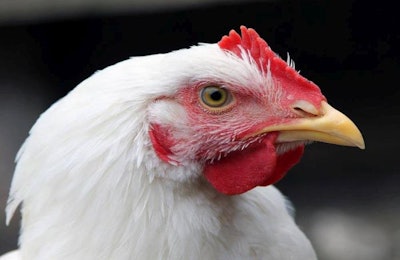
World meat production is forecast to expand by a modest 1.3 percent or 400,000 thousand metric tons from 2014 to 2015, mostly driven by pig and poultry meat. After producing nearly 109,970 thousand metric tons of poultry meat around the world in 2014, production is projected to reach more than 111,000 thousand metric tons in 2015, according to the latest Food and Agriculture Organization (FAO) Agricultural Outlook publication. This growth in output is much slower than the 3 percent annual growth rate observed for poultry meat production over the past decade. FAO’s Food Outlook May 2015 projections show the largest contributions of poultry meat currently coming from the major producers U.S., China, E.U. and Brazil.
Currently, consumption per capita of all meats in developed countries stands at more than double that in developing countries. However, rising populations, urbanization and changing diets in developing regions mean consumption will continue to grow at rates higher than in developed countries. This is particularly true of poultry meat, which remains an affordable choice compared to other meats like beef and is less affected than pig meat by cultural barriers.
Avian influenza hampers trade
Meat trade is also projected to expand moderately by 1.7 percent in 2015 to 31.2 million metric tons. For poultry meat, FAO’s trade forecast shows an increase of 2.6 percent to 13.1 million metric tons in 2015, as it remains the most traded meat accounting for 40 percent of total meat trade. While poultry meat trade volume has increased 55 percent over the past decade, growth has slowed since 2012 so that 11 percent of meat output will be traded in 2015. This slow growth will continue into 2016 as importing countries ramp up domestic production, reducing their dependence on foreign poultry meat. Additionally, outbreaks of highly pathogenic avian influenza (HPAI) around the world over the past year have subdued trade, causing many countries to establish trade bans on imported products from affected regions in the United States. The most notable growth in import demand will originate in developing economies in Asia, as well as Africa to a lesser degree.
The FAO Meat Price Index, a measure of global meat prices, in the first four months of 2015 was generally lower than in the final quarter of 2014, falling from 183 points in January to 178 points in April. After a decade of high and volatile feed costs, lower feed costs over the previous year, along with poultry’s shorter production cycle in comparison to other meats, have helped to support profitability and growth in many regions.
View interactive charts and download the datasets in the Market Data section of WATTAgNet:
Per capita meat consumed worldwide by type 2024 versus base period 2012-14
Poultry meat production in selected countries 2014-15
Poultry meat trade by region 2014-15

















